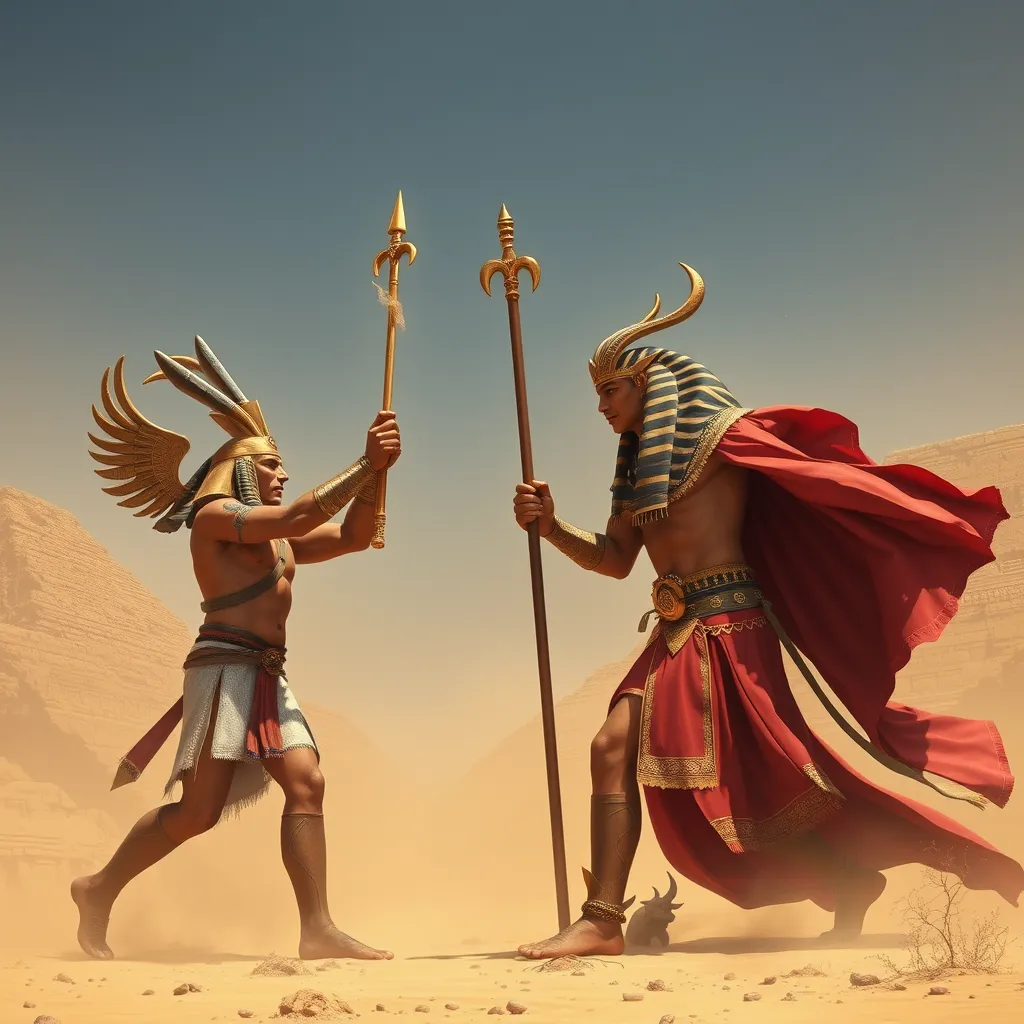The Battle of Horus and Seth: The Epic Struggle for the Throne of Egypt and the Restoration of Order
I. Introduction
The Battle of Horus and Seth is one of the most significant myths in ancient Egyptian culture, symbolizing the eternal struggle between order and chaos. This epic conflict centers around two powerful deities: Horus, the falcon-headed god representing order and kingship, and Seth, the chaotic god associated with storms and disorder. Their battle not only represents a struggle for the throne of Egypt but also serves as an allegory for the broader cosmic battle between good and evil.
II. The Mythological Background
To understand the battle, one must first delve into the rich mythological background of ancient Egypt. Central to this is the creation myth involving Osiris and Isis. Osiris, the god of the afterlife, was murdered by his brother Seth, who wanted to usurp his power. Isis, Osiris’s devoted wife, resurrected him long enough to conceive their son, Horus. Thus, Horus emerged as the rightful heir to Osiris’s throne, destined to reclaim his father’s legacy.
Seth’s rebellion against the rightful order established by Osiris set the stage for the conflict with Horus. With the death of Osiris, Seth believed he had the right to rule, leading to a deep-seated rivalry that would unfold through a series of trials and battles.
III. The Nature of Conflict
The motivations behind Horus and Seth’s rivalry are deeply rooted in themes of power, legitimacy, and the struggle between chaos and order. Horus, representing the legitimate heir and the restoration of divine order, seeks to reclaim his father’s throne. In contrast, Seth embodies chaos and the disruptive forces that threaten stability.
- Chaos vs. Order: This theme is prevalent throughout the myth, with Horus symbolizing the orderly governance of Egypt and Seth representing the chaotic elements that must be subdued.
- The Falcon and the Chaos Monster: Horus is often depicted as a falcon, a symbol of kingship and power, while Seth is represented as a chaotic beast, often associated with storms and disorder.
IV. The Battles and Trials
The conflict between Horus and Seth is marked by several key battles that test their strength and resolve. Each encounter represents not just a physical struggle but also a battle of wits and divine favor.
One notable battle involved a fierce confrontation on the Nile, where both gods transformed into various animals to gain the upper hand. The trials set by the gods added another layer to the conflict, with Horus and Seth facing challenges that tested their abilities and worthiness to rule.
Other gods, such as Thoth, the god of wisdom, and Anubis, the god of the afterlife, played crucial roles in mediating the conflict and determining the outcome of the trials.
V. The Role of Divine Intervention
The gods of the Egyptian pantheon were deeply involved in the conflict between Horus and Seth. Their judgments and interventions significantly influenced the progression of the battle.
- Thoth’s Influence: Thoth often acted as a mediator, providing wisdom and guidance to both parties.
- Anubis’s Role: As the god of the afterlife, Anubis ensured that the balance of life and death was maintained during the trials.
- Divine Judgment: The outcomes of battles were frequently determined by the favor shown by the other gods, reflecting the belief that divine will guided the fate of mortals.
VI. The Resolution of the Conflict
The climax of the battle culminated in a final confrontation where Horus ultimately triumphed over Seth. This victory was not only personal but symbolized the restoration of order in Egypt. Horus’s ascension to the throne marked a new era of stability and peace, affirming his rightful place as the ruler of the kingdom.
With Horus as king, the chaos that Seth represented was subdued, leading to a renewed balance in the land. This resolution had profound implications for ancient Egyptian society, reinforcing the importance of order and the divine right of kings.
VII. Cultural Impact and Legacy
The Battle of Horus and Seth left a lasting impact on ancient Egyptian religion and governance. The myth served as a foundational story that influenced rituals, governance, and the way kings were perceived.
- Religion and Governance: The struggle between Horus and Seth was often invoked to legitimize the rule of pharaohs, who were seen as embodiments of Horus on earth.
- Art and Literature: The portrayal of Horus and Seth in ancient art often depicted their rivalry, emphasizing the themes of order and chaos through various artistic expressions.
- Modern Legacy: The myth continues to resonate in modern culture, inspiring literature, films, and discussions about the nature of power and authority.
VIII. Conclusion
The Battle of Horus and Seth is a profound narrative that encapsulates the eternal struggle between order and chaos, a theme that is central to human experience. The story of these two deities reflects the complexities of power, legitimacy, and the divine right to rule. As we explore the enduring nature of Horus and Seth’s story, we gain insights into the ancient Egyptian worldview and the significance of mythology in understanding their society.
The legacy of this epic battle continues to inform our understanding of both ancient and modern narratives surrounding leadership, moral authority, and the balance between order and chaos.




